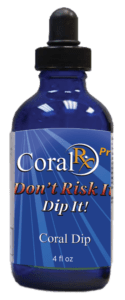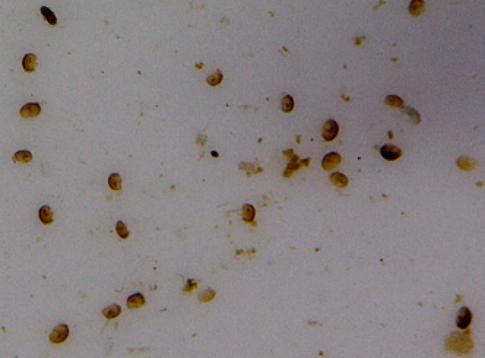Dipping corals is an important part of keeping your display reef safe from pests, but how you dip your corals is just as important. The method we recommend will help you, with good quarantine practices; keep pests out of your display system.
Coral Rx VS the other dips
Coral Rx was developed after many years researching what combination of natural ingredients/extracts worked best to dispatch the widest variety of pests that commonly plague the Reef Aquarium Hobby. Coral Rx is the only dip on the market that has university backed research and testing for its efficacy as a Coral Dip. Money should not be the deciding factor on coral dip choices and many of the products that are used as dips are dangerous to both human and animal.
Stay tuned, because in the next few weeks we will get more in-depth with some of the other coral dip products being promoted on forums and social media and why they just aren’t a good choice to use.
What equipment you need to dip your corals with Coral Rx
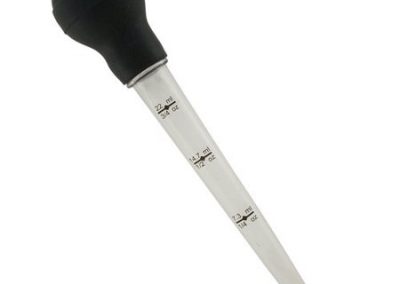

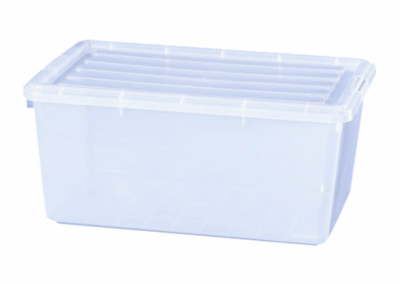
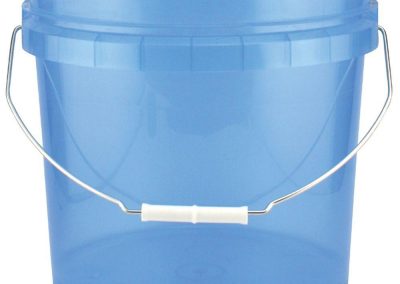
- At least 2 clean containers approximately 12 inches by 9 inches (or large enough to completely immerse your largest coral frag/colony. Many use 3.5 and 5 US Gallon buckets from the hardware store, which is fine if dipping corals is the only task they are used for.
- One or two pairs of Nitrile disposable gloves. These gloves can be acquired by the box relatively inexpensively through Global Industrial Supply, Amazon, Walmart and Ebay. Nitrile is a preferred protective substance because it provides an extra durable barrier between sharp coral edges, stinging chemicals, and potential irritation that some aquarists may experience. Additionally, it will protect you from bacterial like mycobacterium which is a common source of infection in fingers of fish and coral keepers, as well as provide barrier protection from toxins produced by zoas and palys. Eye protection should also be worn when handling zoas and palys to prevent water that is expelled from them with potential toxins getting into your eyes.
- Some type of flat rigid spatula or knife (stainless steel or plastic) to separate frags from frag plugs if you discover eggs or pests on the underside of the plug or near the attachment point on the plug.
- A turkey baster or large bulb syringe to blow off corals in the dip solution.
- A magnifying glass to observe coral nooks and crannies.
- Enough tank water or fresh made salt water to accommodate the volume of your dipping and rinsing containers.
Coral Rx Usage
The dosage of Coral Rx is per gallon of water and should be administered as follows:
In your dipping container place 20ML or 4 capfuls per US Gallon of water, and if you are using Coral Rx Pro you administer 30 drops per US Gallon, and Coral Rx Industrial you administer 10 drops per US Gallon of tank or fresh salt water.
Shake the Coral Rx bottle and add the proper dose of product mixing well after adding. It is advisable to use a small maxijet or power head to keep water circulating in your container while the corals are immersed. If you do not have a powerhead you may periodically shake the corals during the recommended 10-15 minute dip time.
Visually inspect each frag/colony with your magnifying glass and especially observe the undersides of colonies, frag plugs and near coral attachment points where glue and frag meet plug.
Once the 10 to 15 minutes recommended time has elapsed, rinse your corals in clean tank or clean fresh saltwater in container two and place in your quarantine system for continued observation and subsequent repeat dips if needed to break pest lifecycles.
Never reuse mixed coral dip because some pests release toxins when they perish, and never ever use Coral Rx directly in your quarantine or display tank. Avoid exposing invertebrates to coral rx as well.
Please contact us if you have any questions or comments!
